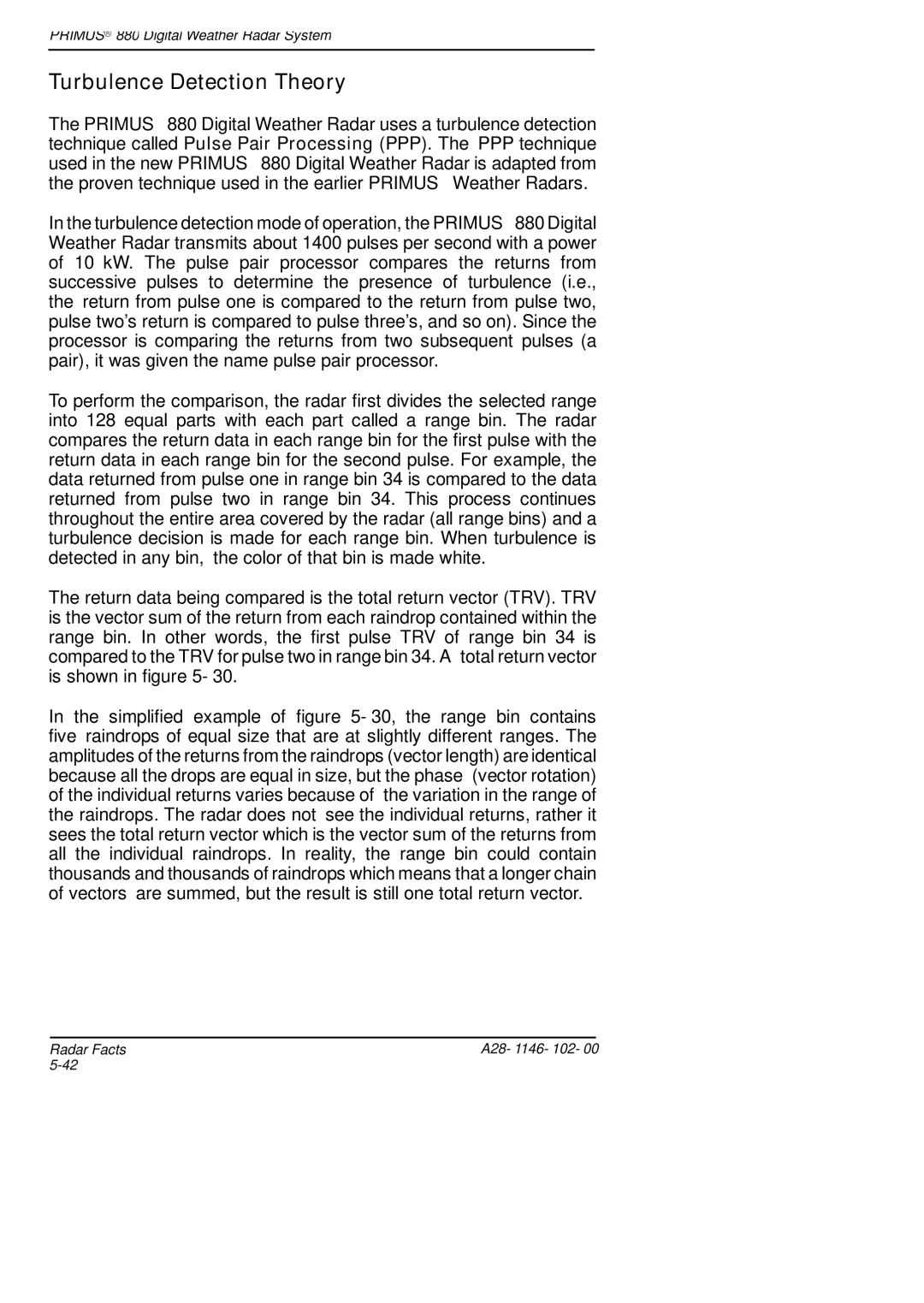
PRIMUSr 880 Digital Weather Radar System
Turbulence Detection Theory
The PRIMUSâ 880 Digital Weather Radar uses a turbulence detection technique called Pulse Pair Processing (PPP). The PPP technique used in the new PRIMUSâ 880 Digital Weather Radar is adapted from the proven technique used in the earlier PRIMUSâ Weather Radars.
In the turbulence detection mode of operation, the PRIMUSâ 880 Digital Weather Radar transmits about 1400 pulses per second with a power of 10 kW. The pulse pair processor compares the returns from successive pulses to determine the presence of turbulence (i.e., the return from pulse one is compared to the return from pulse two, pulse two’s return is compared to pulse three’s, and so on). Since the processor is comparing the returns from two subsequent pulses (a pair), it was given the name pulse pair processor.
To perform the comparison, the radar first divides the selected range into 128 equal parts with each part called a range bin. The radar compares the return data in each range bin for the first pulse with the return data in each range bin for the second pulse. For example, the data returned from pulse one in range bin 34 is compared to the data returned from pulse two in range bin 34. This process continues throughout the entire area covered by the radar (all range bins) and a turbulence decision is made for each range bin. When turbulence is detected in any bin, the color of that bin is made white.
The return data being compared is the total return vector (TRV). TRV is the vector sum of the return from each raindrop contained within the range bin. In other words, the first pulse TRV of range bin 34 is compared to the TRV for pulse two in range bin 34. A total return vector is shown in figure 5- 30.
In the simplified example of figure 5- 30, the range bin contains five raindrops of equal size that are at slightly different ranges. The amplitudes of the returns from the raindrops (vector length) are identical because all the drops are equal in size, but the phase (vector rotation) of the individual returns varies because of the variation in the range of the raindrops. The radar does not see the individual returns, rather it sees the total return vector which is the vector sum of the returns from all the individual raindrops. In reality, the range bin could contain thousands and thousands of raindrops which means that a longer chain of vectors are summed, but the result is still one total return vector.
Radar Facts | A28- 1146- 102- 00 |
|
